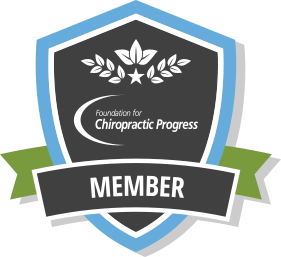Your spinal column, which consists of 24 bones known as vertebrae and the interlaying discs, protect your most delicate and important system, your central nervous system, and impingements within the joints of your spinal column can contribute to a number of health problems and ailments.
The
spinal cord is the first relay site in the transmission of information to the
brain regarding a peripheral stimulus that causes pain. Sensory signals are
transmitted from the periphery by primary nerve fibers into the dorsal horn of
the spinal cord where wide dynamic range neurons are housed. Wide dynamic range
neurons are responsive to thermal, chemical, and mechanical sensory input as
well as a broad range of intensity of stimulation from the peripheral nerves. They
steadily increase their firing rate as the stimulus intensity rises into the very
unpleasant range. Therefore adverse stimulation of wide dynamic range neurons can
lead to altered body image[1] such
as:
- Feeling like your back or neck is “swollen”
- Feeling of “stiffness” despite normal range of motion
- Alteration of the body’s natural ability to maintain good posture in relation to the surrounding environment at rest and during motion
- Headache pain[2]
An
effective solution to maintaining optimal wellness is chiropractic care. Chiropractic
is like brushing your teeth, it's something you need, just like regular dental
hygiene, to maintain the life of your spine, because regular activities, poor
posture, chronic sitting, and improper ergonomics can contribute to your spine
functioning less than optimally.
Research
published in a June 2004[3] and
subsequent May 2007[4] edition
of the Journal of Manipulative and
Physiological Therapeutics examined the integration of allopathic[5], osteopathic,
chiropractic and various forms of alternative and complementary medicine versus
conventional strategies alone at a health maintenance organization (HMO) in
metropolitan Chicago. The data complied was based on 70,274 member-months[6] over a
seven-year period and they found that the integrative care model resulted in:
- 60.2% decrease in-hospital admissions
- 59% decrease in hospital days[7]
- 62% decrease in outpatient surgeries
- 85% decrease in pharmaceutical costs
Subsequently,
a National Health Interview Survey was conducted in 2012 which provides the
most comprehensive information on the use of complementary health approaches in
the United States. National estimates were derived via data collected from
34,525 adults aged 18 and over regarding wellness-related reasons for
consumer’s utilization of supplementation, yoga, and spinal manipulation. The
results of this survey were published on November 4, 2015 by the National Center for Complementary and
Integrative Health (NCCIH) and they found that:
- Over 50% reported using spinal manipulative therapy (SMT) for wellness
- While over 65% reported using spinal manipulation for treating a specific health condition
 |
| Wellness Related Use of CAM |
However,
the most common responses from those using SMT for general wellness or disease
prevention was:
- It improved overall health
- Spinal manipulation “made them feel better.”
In
fact, approximately 40% of those who reported utilizing chiropractic care
stated that they experienced reduced stress, better sleep, and/or an easier
time coping with health problems after receiving spinal manipulative therapy.
 |
| Chiropractic Care Makes People Feel Better |
This
data substantiates the fact that the traditional medical model of healthcare is
beginning to wane. Today’s healthcare consumer is now more focused on the
effects that physical and psychological stress has on our bodies and the therapeutic interventions that address the mind-body connection are beginning to receive
some much deserved attention as well as implementation. Chiropractors clearly
have a greater role in your health and wellness than just treating sore backs.
Chiropractic care should be considered an invaluable
tool to assist you in not only feeling well, but to also help you maintain an optimal level of
wellness.
[1] Nijs
J, et al. “Nociception affects motor output: a review on sensory-motor
interaction with focus on clinical implications.” Clin J Pain.
2012;28(2):175-81
[2]
Jull, et al. “Cervical musculoskeletal impairment in frequent intermittent
headache. Part 1: Subjects with single headaches.” Cephalalgia 2007; 27:793-802
[3] Sarnat,
Richard, and James Winterstein. "Clinical and Cost Outcomes of an
Integrative Medicine IPA." Journal of Manipulative and Physiological
Therapeutics. U.S. National Library of Medicine, June 2004. Web. 08 Feb. 2017.
[4] Sarnat,
Richard, James Winterstein, and JA Cambron. "Clinical Utilization and Cost
Outcomes from an Integrative Medicine Independent Physician Association: An
Additional 3-year Update." Journal of Manipulative and Physiological
Therapeutics. U.S. National Library of Medicine, May 2007. Web. 08 Feb. 2017.
[5] This
is the principle of mainstream medical practice, as opposed to that of
homeopathy.
[6] The
number of individuals participating in an insurance plan each month. Member
month is calculated by taking the number of individuals enrolled in a plan and
multiplying that sum by the number of months in the policy.
[7] The
total number of days a patient stays in a hospital after admission to the
hospital for a sickness that requires 24-hour nursing care and medication.




